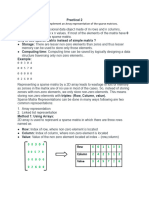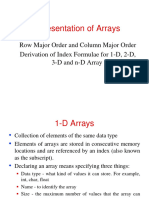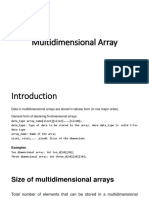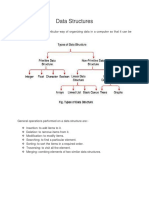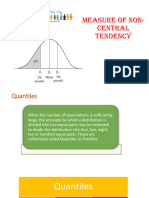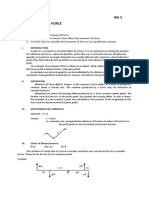0% found this document useful (0 votes)
176 views23 pages02 - Arrays
Arrays provide constant time access to elements. The complexity of operations on arrays is generally linear. Multidimensional arrays use row-major or column-major ordering to calculate element addresses. Practice questions involve calculating element addresses in arrays of various dimensions and running order.
Uploaded by
Muhammad Owais khanCopyright
© © All Rights Reserved
We take content rights seriously. If you suspect this is your content, claim it here.
Available Formats
Download as PDF, TXT or read online on Scribd
0% found this document useful (0 votes)
176 views23 pages02 - Arrays
Arrays provide constant time access to elements. The complexity of operations on arrays is generally linear. Multidimensional arrays use row-major or column-major ordering to calculate element addresses. Practice questions involve calculating element addresses in arrays of various dimensions and running order.
Uploaded by
Muhammad Owais khanCopyright
© © All Rights Reserved
We take content rights seriously. If you suspect this is your content, claim it here.
Available Formats
Download as PDF, TXT or read online on Scribd
/ 23


